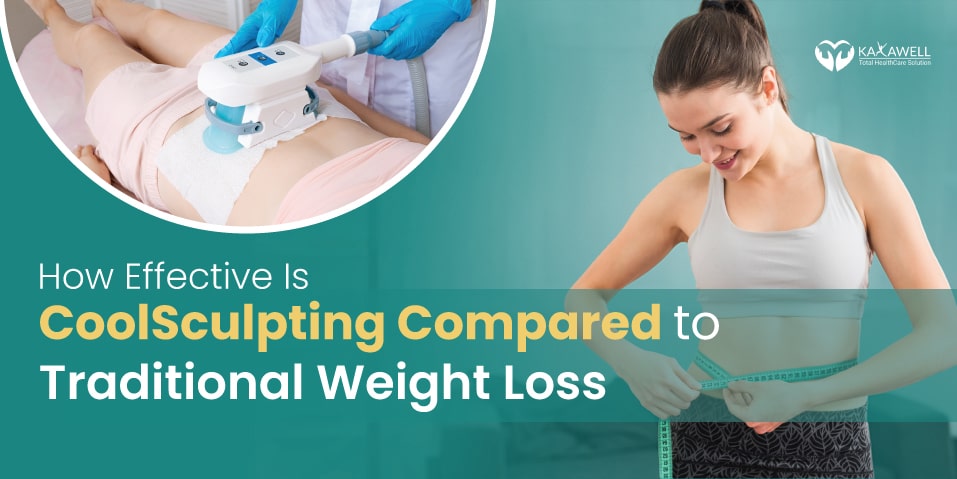In recent years, non-invasive body contouring methods have become increasingly popular among individuals seeking to reduce stubborn fat without the commitments and risks associated with surgery. Among these methods, CoolSculpting has emerged as a prominent option, offering a way to target and reduce fat cells using cryolipolysis or controlled cooling. This treatment has been particularly noted for its effectiveness in areas like the abdomen, where stubborn fat often resides. In contrast, traditional weight loss methods typically involve dieting and exercise to reduce overall body fat.
This article explores the effectiveness of CoolSculpting compared to traditional weight loss methods.
Understanding CoolSculpting
CoolSculpting operates on the principle of cryolipolysis, which involves applying cold temperatures to target and destroy fat cells while leaving surrounding tissues unharmed. The dead fat cells are then naturally processed and eliminated by the body over several weeks. The treatment is FDA-approved and generally considered safe when performed by a qualified practitioner.
Individuals wondering about its efficacy on specific body areas, may ask this question – does coolsculpting work on belly fat? As such, it’s best to visit some resource websites online to gain detailed insights into how this method can significantly reduce abdominal fat, which is notoriously resistant to diet and exercise.
Procedure and Target Areas
The CoolSculpting procedure is notably simple and non-invasive. In a typical session, a trained practitioner first places a protective gel pad on the skin to shield it from extreme cold. An applicator is then used on the targeted area, such as the belly, thighs, back, or under the chin—areas often resistant to diet and exercise. This applicator delivers precisely controlled cooling to the fat cells underneath the skin.
The cold temperature targets explicitly and freezes the fat cells, leading to their natural death without affecting surrounding tissues. Over the following weeks, the body naturally processes and eliminates these dead cells, resulting in reduced fat thickness in the treated areas.
Read More: Home Remedies to Reduce Belly Fat
Comparing CoolSculpting to Traditional Weight Loss
Exploring weight loss strategies, CoolSculpting presents a modern alternative to traditional methods, focusing on localized fat reduction through cryolipolysis. Here’s how CoolSculpting differs from traditional weight loss methods :
1. Mechanism of Action
Unlike traditional weight loss methods that shrink fat cells by using their stored energy through calorie deficit, CoolSculpting eliminates fat cells from the treated areas. This results in a reduction of fat in specific locations rather than a general decrease in body weight.
2. Efficacy in Fat Reduction
It is believed that CoolSculpting can reduce fat in the treated area by up to 20-25%. However, these results are localized, meaning they affect only the area treated and do not significantly influence overall body weight. Traditional weight loss, on the other hand, is comprehensive and affects the entire body uniformly. It also contributes to improvements in overall health metrics like cholesterol levels, blood pressure, and insulin sensitivity.
3. Timeframe and Sustainability of Results
The results of CoolSculpting begin to appear within a few weeks of treatment, with the most dramatic results visible after about two months. However, since the procedure only removes fat cells from specific areas, maintaining these results requires a stable body weight. In contrast, traditional weight loss methods can be more sustainable as they often involve lifestyle changes such as diet modifications and regular physical activity.
Risks and Side Effects
CoolSculpting is considered low-risk, especially when compared to surgical procedures like liposuction. Common side effects include temporary numbness, redness, and swelling at the treatment site. More severe complications are rare but can consist of paradoxical adipose hyperplasia, where the treated area increases in size rather than decreases.
On the other hand, traditional methods carry their risks, mainly if weight loss is rapid or achieved through extreme diets or excessive exercise. Potential issues include nutrient deficiencies, muscle loss, and metabolic slowdown. Moreover, extreme weight loss efforts can lead to yo-yo dieting, which is associated with adverse health impacts.
Cost Consideration
The cost of CoolSculpting can be significant and is influenced by several factors, including the size of the area being treated and the number of sessions needed to achieve desired results. Typically, larger areas like the abdomen may require multiple treatments, thus increasing the overall expense. While traditional weight loss methods such as dietary adjustments and regular exercise generally incur minimal costs, they may not effectively target specific stubborn fat areas.
For individuals struggling with such localised fat, despite lifestyle modifications, CoolSculpting offers a focused solution that, though costly, can provide noticeable, long-lasting results. This makes it a valuable investment for achieving specific aesthetic goals.
Conclusion
CoolSculpting provides a targeted approach to fat reduction, making it a practical option for individuals looking to eliminate stubborn pockets of fat that do not respond to traditional weight loss methods. While it does not contribute to overall weight loss or improve general health indicators, it offers a non-invasive alternative with minimal downtime and low risk of severe side effects.
As with any medical procedure, individuals considering CoolSculpting should consult with a healthcare provider to determine the most appropriate treatment for their specific needs and circumstances.
